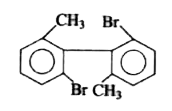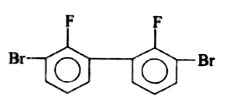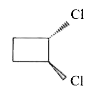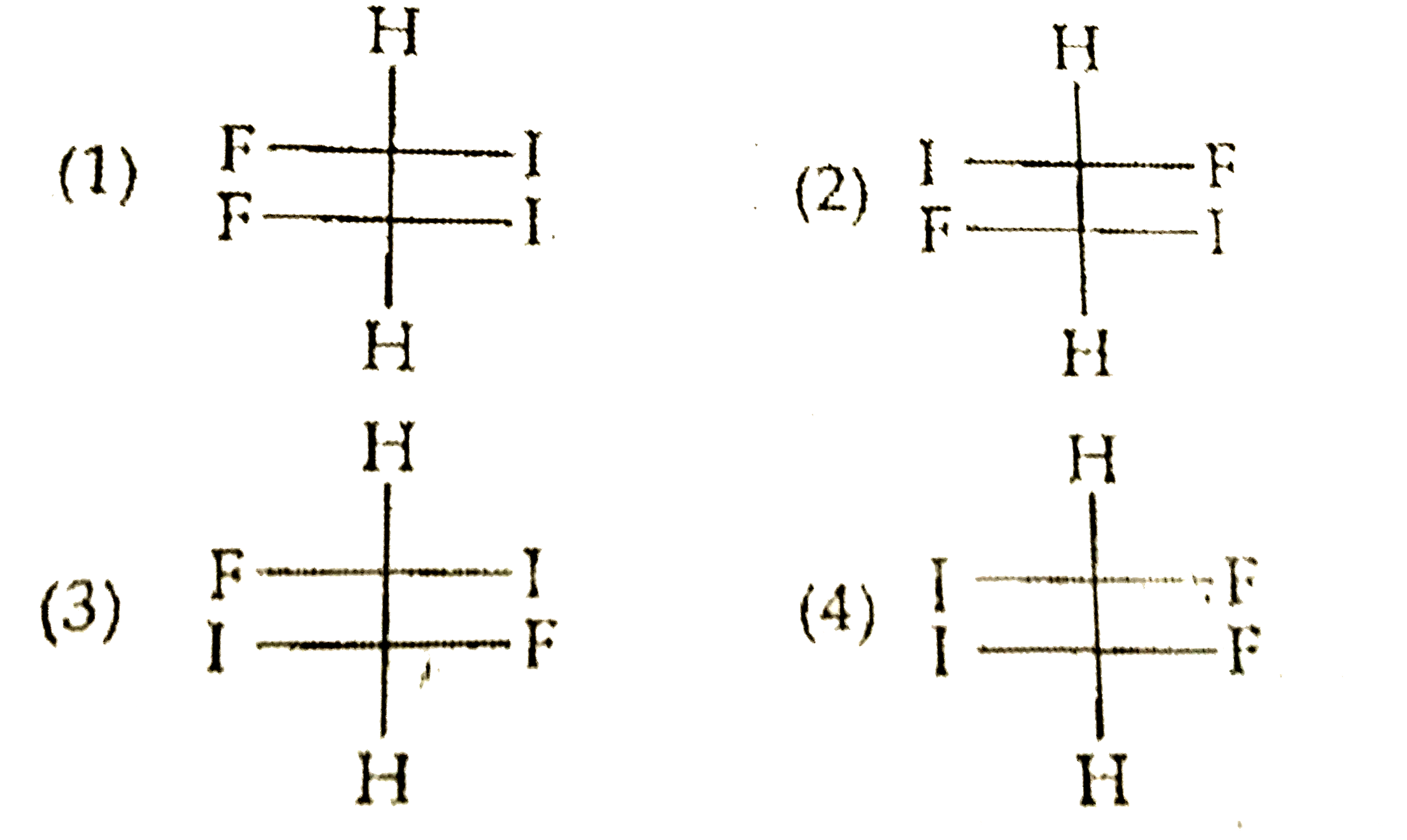Which of the following compounds will be optically active?




The correct Answer is:C
To determine which of the given compounds is optically active, we need to follow a systematic approach. Here’s a step-by-step solution:
Step 1: Understand the Conditions for Optical Activity
For a compound to be optically active, it must meet two conditions:
1. Presence of a Chiral Carbon: A chiral carbon is typically an sp³ hybridized carbon atom that is bonded to four different groups (or atoms).
2. Absence of a Plane of Symmetry: The molecule must not have any plane of symmetry, which would allow it to be superimposed on its mirror image.
Step 2: Analyze Each Compound
Let’s analyze the compounds one by one:
Compound 1:
- Observation: Contains a double bond (C=C).
- Analysis: The presence of a double bond indicates that at least one carbon is sp² hybridized, which cannot be chiral. Therefore, this compound does not have a chiral carbon.
- Conclusion: Not optically active.
Compound 2:
- Observation: Contains a nitrogen atom and carbon atoms with similar substituents.
- Analysis: One of the carbons is bonded to two hydrogen atoms, which means it does not have four different groups. Thus, it does not meet the criteria for chirality.
- Conclusion: Not optically active.
Compound 3:
- Observation: Contains a carbon atom bonded to four different groups.
- Analysis: This carbon has four different substituents (e.g., CH3, H, and two other distinct groups). Since there is no plane of symmetry (the groups are arranged in such a way that they cannot be superimposed on their mirror image), this compound is chiral.
- Conclusion: Optically active.
Compound 4:
- Observation: Contains similar groups on the same side.
- Analysis: This compound has a plane of symmetry because the groups can be divided into two identical halves. Therefore, it does not meet the criteria for optical activity.
- Conclusion: Not optically active.
Final Answer
Based on the analysis, Compound 3 is the only compound that is optically active.
---
For a compound to be optically active, it must meet two conditions:
1. Presence of a Chiral Carbon: A chiral carbon is typically an sp³ hybridized carbon atom that is bonded to four different groups (or atoms).
2. Absence of a Plane of Symmetry: The molecule must not have any plane of symmetry, which would allow it to be superimposed on its mirror image.
Let’s analyze the compounds one by one:
- Observation: Contains a double bond (C=C).
- Analysis: The presence of a double bond indicates that at least one carbon is sp² hybridized, which cannot be chiral. Therefore, this compound does not have a chiral carbon.
- Conclusion: Not optically active.
- Observation: Contains a nitrogen atom and carbon atoms with similar substituents.
- Analysis: One of the carbons is bonded to two hydrogen atoms, which means it does not have four different groups. Thus, it does not meet the criteria for chirality.
- Conclusion: Not optically active.
- Observation: Contains a carbon atom bonded to four different groups.
- Analysis: This carbon has four different substituents (e.g., CH3, H, and two other distinct groups). Since there is no plane of symmetry (the groups are arranged in such a way that they cannot be superimposed on their mirror image), this compound is chiral.
- Conclusion: Optically active.
- Observation: Contains similar groups on the same side.
- Analysis: This compound has a plane of symmetry because the groups can be divided into two identical halves. Therefore, it does not meet the criteria for optical activity.
- Conclusion: Not optically active.
Based on the analysis, Compound 3 is the only compound that is optically active.
Similar Questions
Knowledge Check
- Question 1 - Select One
Which of the following compounds is optically active?
A B
B C
C D
D
- Question 2 - Select One
Which of the following compounds is optically active?
A B
B C
C D
D
- Question 3 - Select One
Which of the following compounds is optically active ?
A1-BromobutaneB2-BromobutaneC1-Bromo-2-methylpropaneD2-Bromo-2-methylpropane
Which of the following species will be optically active ?
View SolutionWhich of the following compound may be optical active ?
View SolutionWhich of the following compounds is optically inactive?
View SolutionWhich of the following compounds are optically inactive but exhibit geometrical isomerism?
View SolutionWhich of the following compound is optically inactive ?
View Solution



